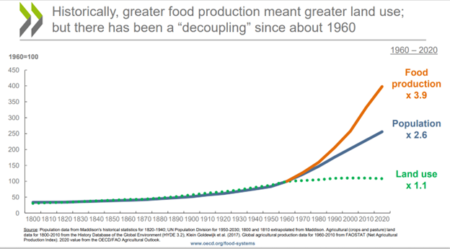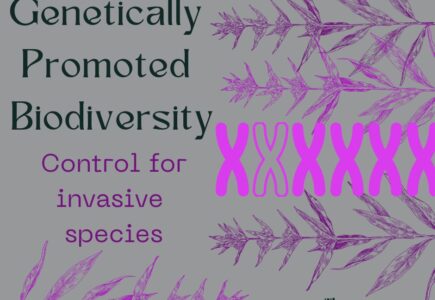The following article was originally posted by the Genetic Literacy Project (GLP), on February 7, 2023: Social justice environmental activists move to block gene editing to control invasive species and promote biodiversity. Here’s why they’re misguided.
Click here to see Dr. Smyth’s original post. Thank you to GLP for allowing us to share this post with our audience!
Social justice environmental activists move to block gene editing to control invasive species and promote biodiversity. Here’s why they’re misguided
Hawaii has emerged as ground zero for efforts to raise the awareness of the dangers of invasive species. Just last month, biosecurity experts testified in the state legislature, forecasting more than $3 billion in costs associated with just four invasive species running wild: brown tree snake, miconia (a weedy tree), little fire ant and red imported fire ant. The estimated eradication costs for just these four invaders using today’s limited methods: $38 million.
“It’s time to get serious” said the chair of the state’s Energy and Environment Committee.
Despite everyone’s acknowledgement of the threat invasive species pose, fierce divisions have arisen of the best methods to address the growing problem. The debate illuminates the split that has recently emerged between back-to-nature eco-justice environmentalists and early embracers of technological innovation.
Defining invasive species
As their name suggests, invasive species are not indigenous or native to a specific area or region, whose presence can cause economic and/or environmental damage. They are a central threat to biodiversity. They can alter natural habitats, destroy native plants by competing for limited resources, gobble up native animal populations and disrupt organisms that provide food to keep nature in balance. They also can endanger human health.
The difference between invasive species and non-native species that are intentionally adopted is that the non-native adopted species doesn’t result in economic and/or environmental harms or damage. They are an anathema to biodiversity.
Examples would be potato and corn adoption and production in Europe, as both species originated in the Americas. Similarly, wheat adoption in the Americas would represent the adoption of a non-native, non-harmful species.
The National Geographic Society (NGS) identifies that an invasive species adapts to a new area easily. It reproduces quickly. It harms property, the economy, or the native plants and animals of the region. They are capable of causing substantial environmental damage, biodiversity loss and even species extinction. The uncontrolled spread of an invasive species can damage local environments and ultimately reduce the local biodiversity as native species lack the ability to compete.
As an example, the NGS identifies that brown tree snakes were accidentally brought to Guam, an island in the South Pacific, in the late 1940s or early 1950s. No animals on Guam hunted the snakes, but the island was filled with birds, rodents, and other small animals that the snakes hunt. The snakes quickly multiplied, and they are responsible for the extinction of nine of the island’s 11 forest-dwelling bird species. Left uncontrolled, invasive species have demonstrated substantial biodiversity loss.
COP-15 biodiversity agreement
In December 2022, the nations of the world convened in Montreal to seek new agreements on how to best protect the planet’s biodiversity. This meeting, known as COP-15, was held as part of the United Nation’s Conventional on Biological Diversity agreement, which seeks to reach new global agreements on ways of protecting biodiversity. COP-15 created the ‘30 x 30’ agreement – an ambition to conserve 30% of the world’s land and 30% of the ocean by 2030. A key component of the ‘30 x 30’ agreement is that eco-systems be restored, wherever possible. Regulations will be a common means of restoration, such as preventing mine development, denying logging permits and limiting agricultural inputs, as some examples.
I attended COP-15, and came away frustrated and a bit shocked. There was a surprising degree of misinformation and disinformation circulating about the safety and benefits of modern technologies. Equally concerning was the utter lack of recognition of the benefits that arise from public-private partnerships targeted at improving food security and improving rural economies. Words that were on the endangered species list included: innovation, modern agriculture and private industry. What was echoing the hallways were non-descriptive terms like regenerative agriculture and eco-sustainable food production. These are nothing more than buzz words designed to make people feel positive about what they’re discussing, but lack substance.
There were dozens of side events organized by environmental non-governmental organizations (NGOs) focused on rejecting the beneficial innovations of modern agriculture, and I attended several of them. A common theme was that a return to subsistence, organic-based agriculture was the key to both improved food security and biodiversity improvement.
This is one of primary arguments put forth by one of the global leaders of the contemporary agriculture rejectionist movement, Indian philosopher and social justice activist Vandana Shiva. In contrast with most global experts on food security, she maintains, falsely, that small farms produce more food that larger farms and rejects mechanical weeding, arguing that hand weeding brings farmers closer to nature. Shiva was the architect of Sri Lanka’s decision in 2021 to abandon many modern farming methods by rejecting the use of fertilizers and pesticides.
Policies of this nature defy all evidence. As the New York Times (Sri Lanka’s Plunge into Organic Farming Brings Disaster) and Foreign Policy have reported, the policies led to a collapse of the country’s economy.
The figure below comes from an Organisation for Economic Cooperation and Development report Making Better Policies for Food Systems. It confirms the important contributions from innovations in seed genetics, chemicals, fertilizers and equipment. Prior to 1960, organic agriculture of the kind advocated by Vandana Shiva and other social justice advocates accounted for the vast majority of agricultural production, with the only way to increase production being an increase in cultivated land. Much of the land brought into production at this time, has been defined as marginal crop-producing land, that is easily erodible and often lacking sufficient soil nutrients to produce crops.

Figure 1: Population, food production and agricultural land use: 1800-2020. Credit: OECD. 2021
Modern agricultural innovations allow for a decoupling of increased yield from increased land utilization. Presently, agriculture is supplying food for over 8 billion people while using only 10% more land than in 1960 — but producing 390% more food. The evidence resulting in this substantial increase in yields was in short supply during many conversations and presentations at COP-15.
Gene editing and the challenge of controlling invasive species
Control of invasive species has been extremely difficult with eradication virtually impossible. To control invasive plant species, chemicals are commonly used while in some instances removal of plants by hand, as Shiva advocates, is undertaken. Efforts to control invasive animals include poisoning and shooting. Needless to say, these ‘control techniques’ are inefficient and often harmful to the applicators.
Advances in genetics potentially offer new solutions, using gene editing technology to create sterile populations. Sterility is a natural trait in mammals, which can be induced into invasive animals as a means of population control. Invasive pests can be captured, gene-edited to confer sterility in future generations and then released back into the wild. The offspring will gradually without the use of chemicals or hand labor contribute to reduced populations. Applying gene editing technologies is not an instantaneous solution, but they may be part of a long-term strategy.
Gene editing invasive wild pigs
Pigs have been part of Canadian and United States food production and farming for centuries. While domesticated pigs have a lengthy history of being part of North American pork production, wild European pigs do not. Wild boar were brought from Europe in the late 1980s and early 1990s to diversify livestock production. And to meet increasing demand for exotic wild meat and contained hunting.
Like any aspect of agriculture, animals don’t necessarily stay where they are supposed to. Some wild pigs escaped from their containment facilities, while others were deliberately released when the demand for exotic meats declined. As a result, tens of thousands of wild pigs exist in Canada and millions more in the USA.
These pigs are not native to Canada or the US; they are an invasive species, causing environmental damage and contributing to the spread of disease. Methods to eradicate them have been practiced over the past 30 years, but are failing to reduce their spread or the economic and environmental damages they cause.
If the application of gene editing sterility was allowed as a population control option, sterility would be passed from edited parents to offspring, which would not be able to reproduce. Wild pigs have a life span of approximately 5 years. Within a decade of utilizing gene editing to control feral pig populations, declines would begin to be observed. Sterility resulting from gene editing wouldn’t be a magic solution, but it is capable of contributing to protecting biodiversity.
Embracing technology to improve biodiversity
Given the vocal opposition to the latest scientific advances at COP-15, considerable uncertainty exists over whether environmental NGOs would launch campaigns to undermine the embrace of safe technologies preventing gene editing and gene drives that would significantly limit the damage from invasive species and preserve biodiversity.
ENGO calls to protect biodiversity are certainly welcomed, but when they reject safe, beneficial technologies, it is apparent that the ENGOs that call for preserving biodiversity are less interested in the actual preservation of biodiversity than scoring ideological points. Their goals seem intended to limit technological innovation.
Governments are being urged to take actions to reduce farming practices that negatively impact biodiversity in their countries. That’s a worthy goal. But, not with one hand tied behind their back. They would be wise to use genetic technologies capable of contributing to controlling invasive species.
The time has come to set politics and emotions to the side and let scientific empirical evidence drive biodiversity improvements. If the intended achievements from COP-15 are to be realized, all stakeholders need to recognize — they would be best served by embracing empirical evidence to guide their actions.

Thanks again to GLP for allowing us to share this post with our audience! Click here to see Dr. Smyth’s original post, along with the photos and comments attached to this original post.


